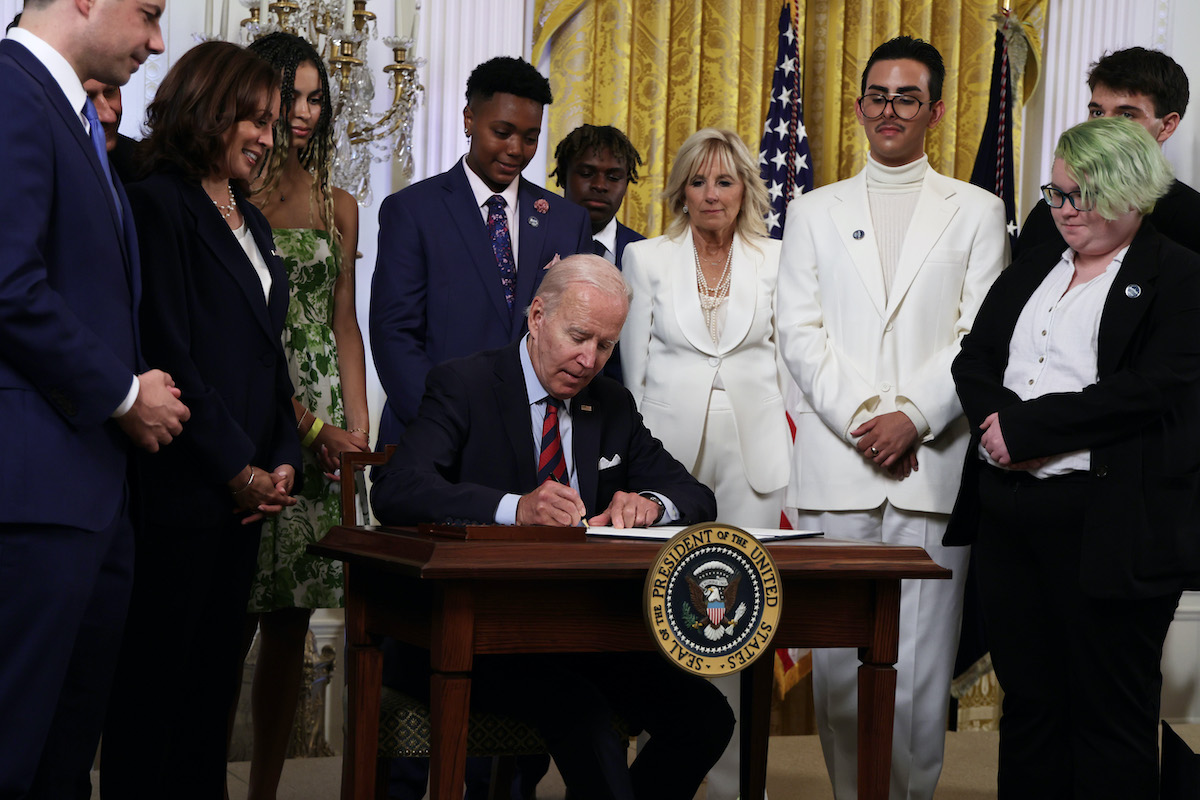Biden Targets Conversion Therapy, Anti-Trans Bills, and More in Sweeping LGBTQIA Rights Executive Order

President Biden has regularly told LGBTQIA people—and especially transgender youth—that he “has their back.” That’s a phrase he’s repeated numerous times in recent years, from Twitter to the State of the Union. It’s a nice sentiment but it’s also the kind of message that requires action to back it up—action that Biden hasn’t always followed through with to the degree many would like.
But this week, Biden signed a sweeping executive order aimed at protecting the rights of LGBTQIA people. And at the very least, it is a big step in a lot of right directions.
President Biden, as he signed an LGBTQ+ executive order: "My message to all the young people: Just be you. You are loved. You are understood. You do belong. I want you to know that as your president, all of us on this stage, have your back."
— Kyle Griffin (@kylegriffin1) June 15, 2022
The order targets a number of different areas of LGBTQIA discrimination. It aims to combat the barrage of “harmful and discriminatory legislative attacks on LGBTQI+ children, youth, and families” and to protect LGBTQIA people’s access to health care. It also tasks the Secretary of Education with protecting LGBTQIA students’ well-being and supporting their academic success.
There’s also a provision in the order dedicated to ending conversion therapy. Nearly half of U.S. states and territories have no laws whatsoever to protect LGBTQIA youth from this horrific practice. A lot of headlines are claiming Biden’s order bans the use of federal funds in conversion therapy but that’s not exactly true. Rather, the order asks the Department of Health and Human Services to “establish an initiative to reduce the risk of youth exposure to so-called conversion therapy.” Part of that initiative is to “consider” whether conversion therapy “does not meet criteria for use in federally funded health and human services programs.”
And that’s pretty much the gist of the entire order. It doesn’t seem to propose any immediate changes, but sets priorities for a lot of different departments in his administration. A lot of the tasks issued to those departments come with 100 to 200-day deadlines, meaning they’ll be spending the next few months gathering information before coming back with recommendations for new policies. In the past, those sorts of deadlines have come and gone without any public acknowledgment, so if we want this sort of executive order to actually mean anything in the long run, we’ll have to keep our eyes on it.
(image: Alex Wong/Getty Images)
Have a tip we should know? tips@themarysue.com